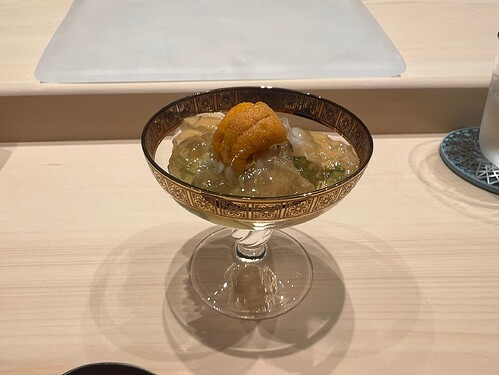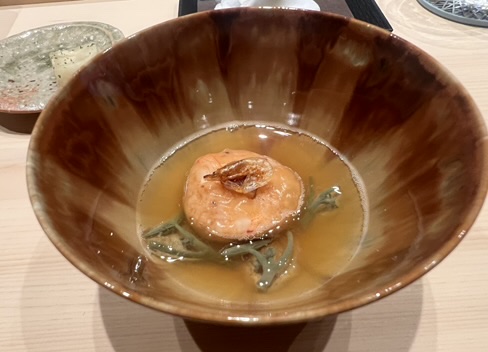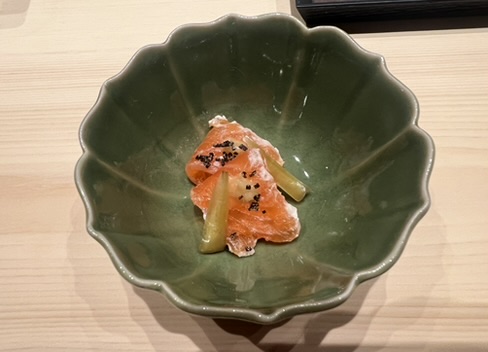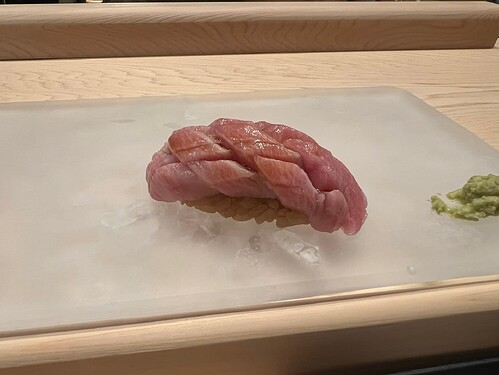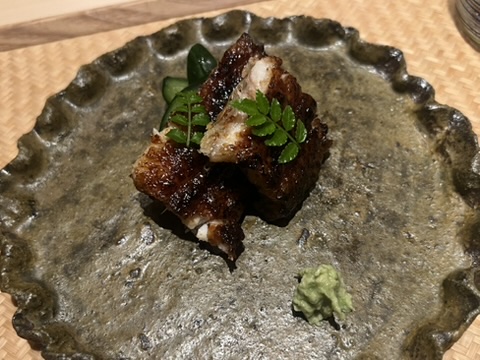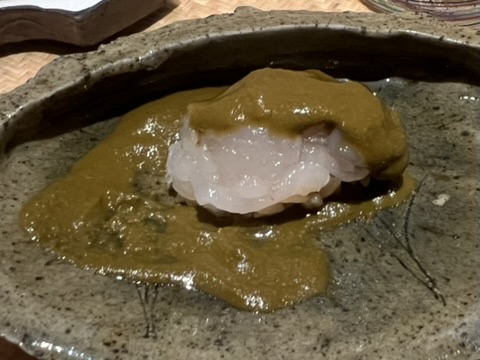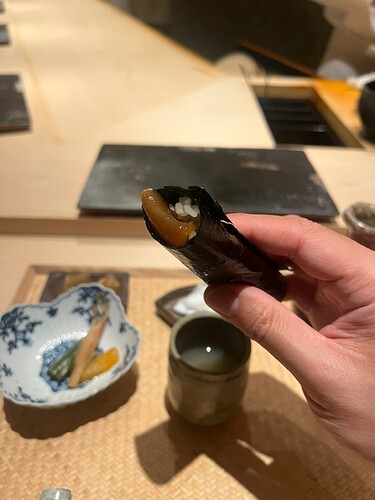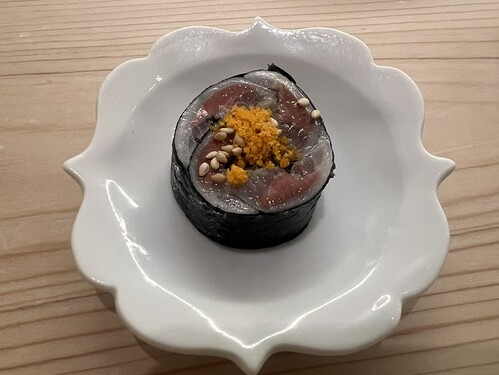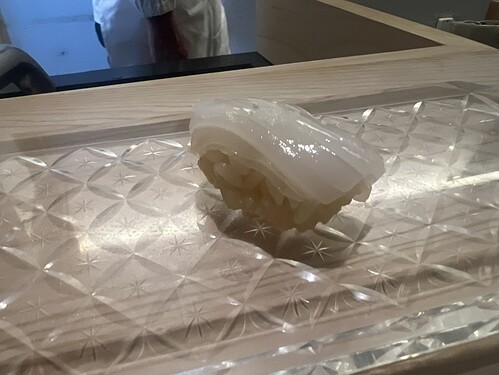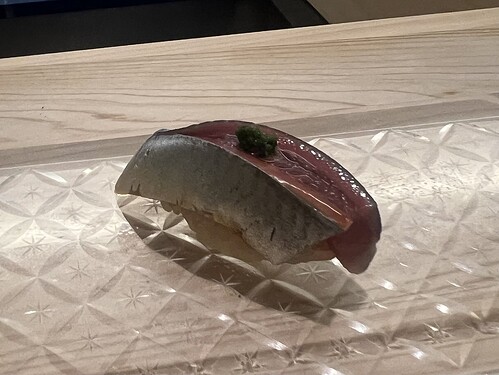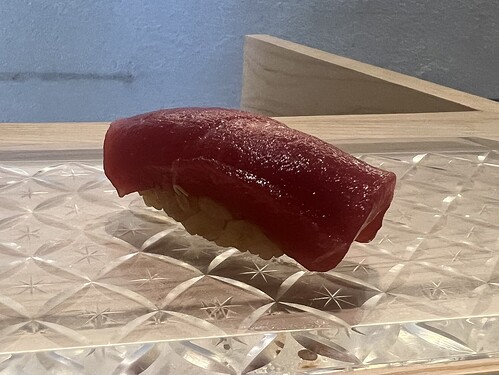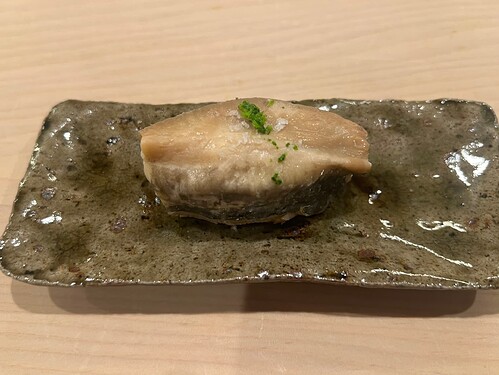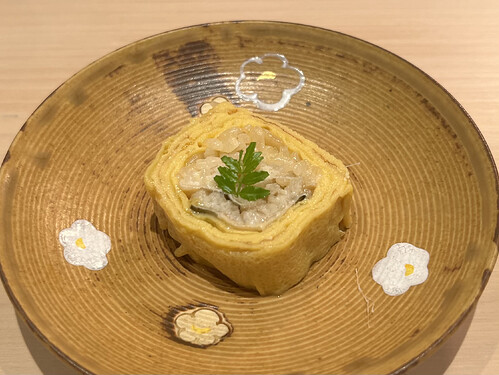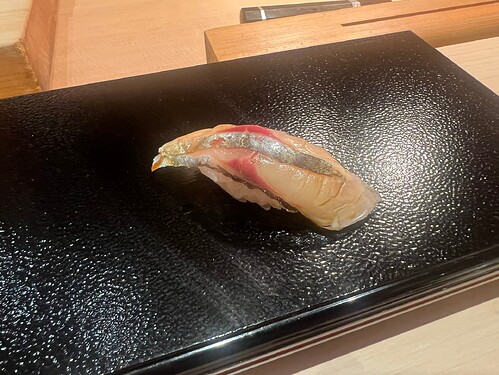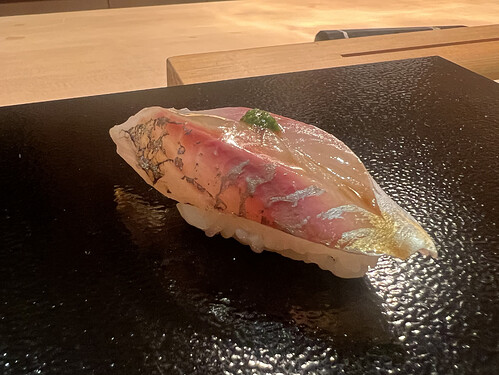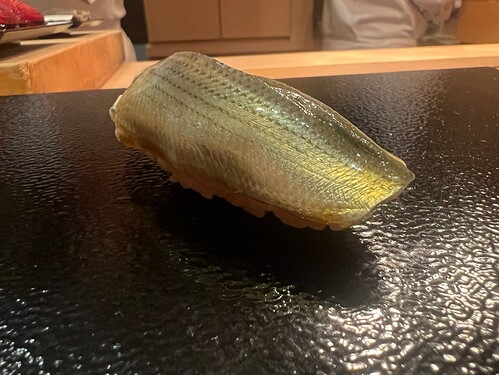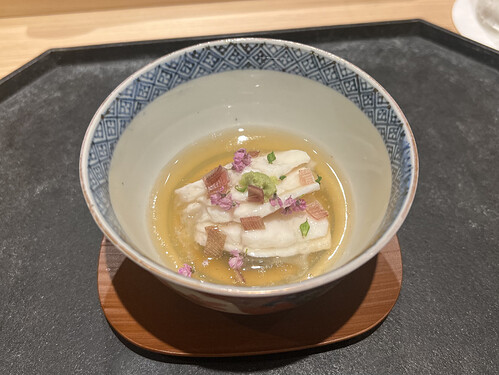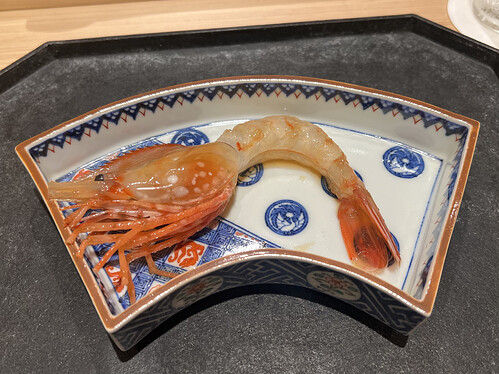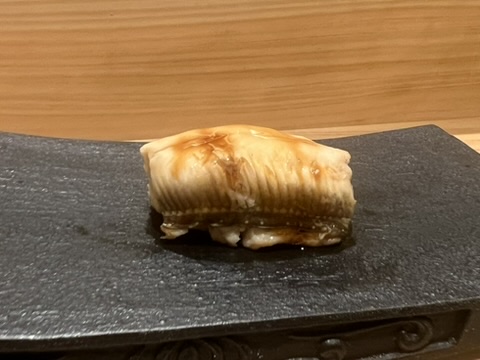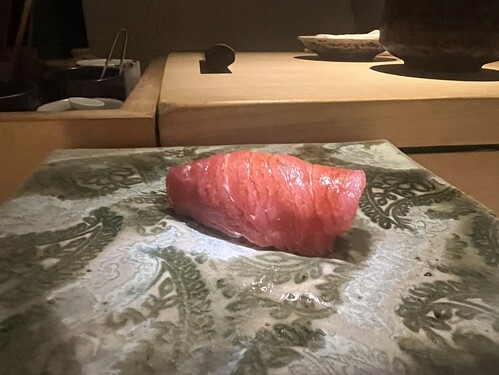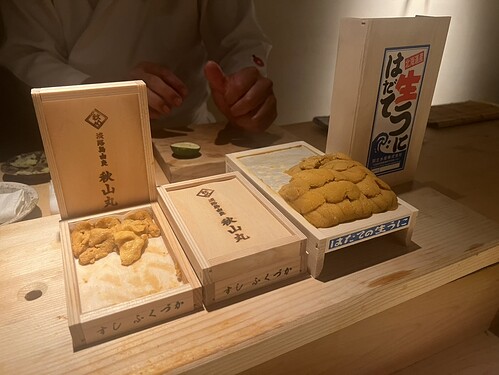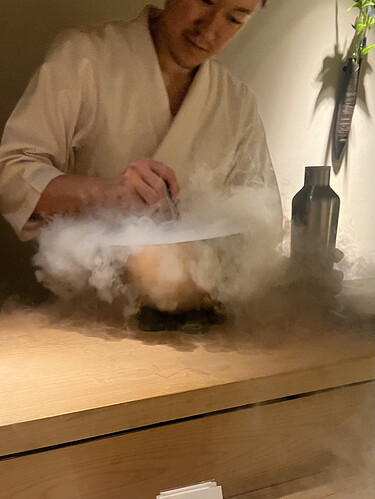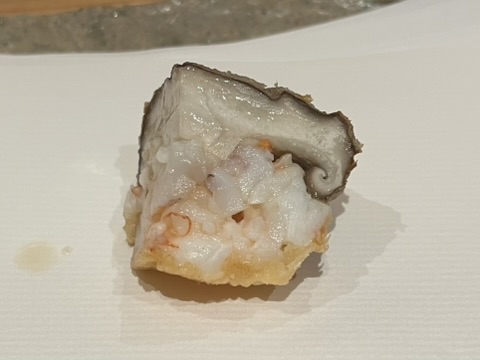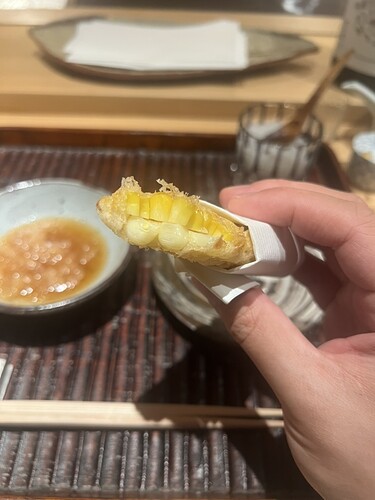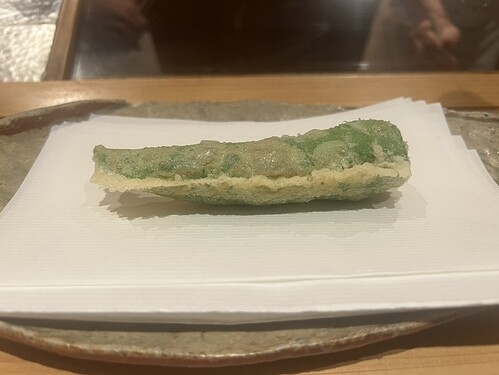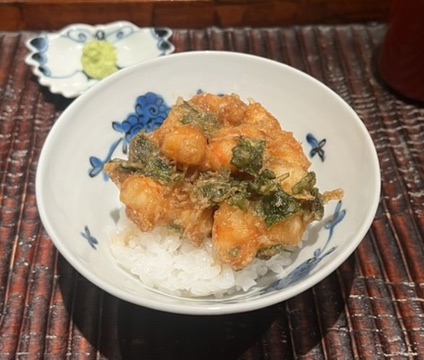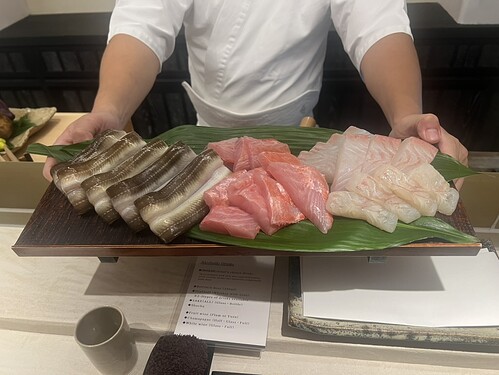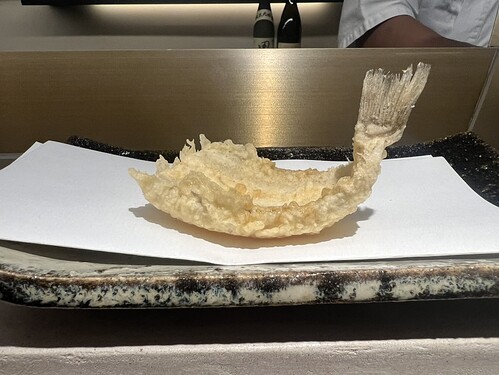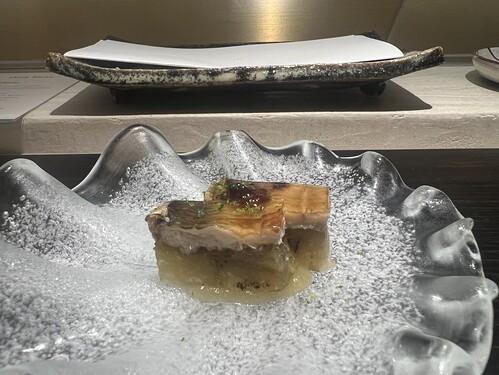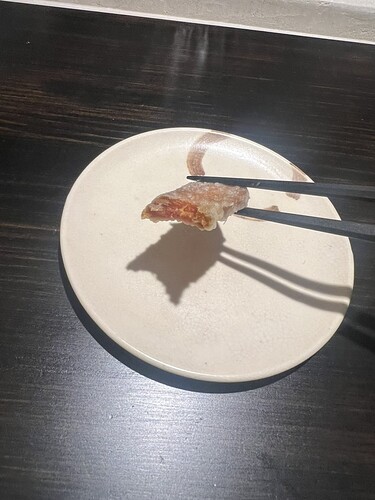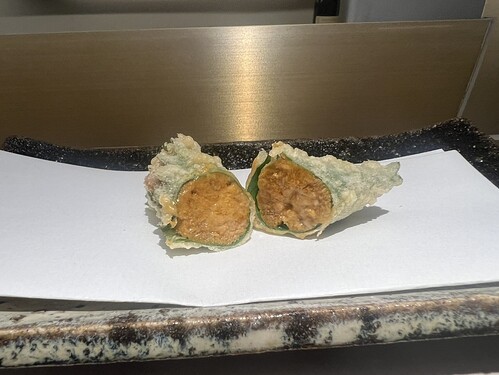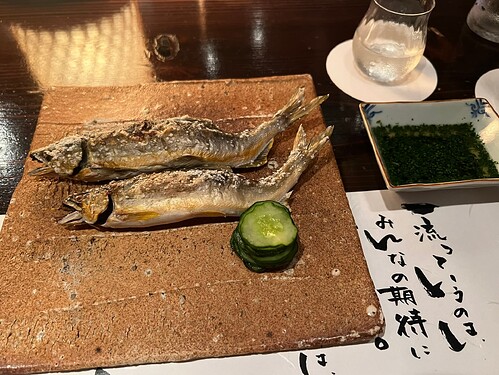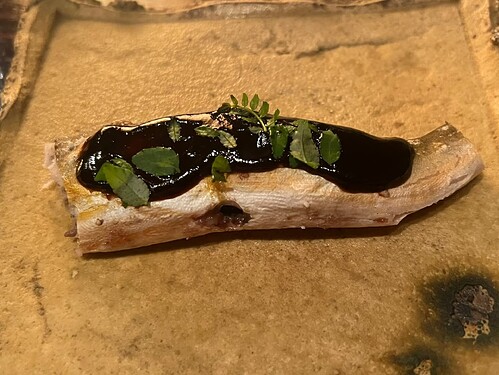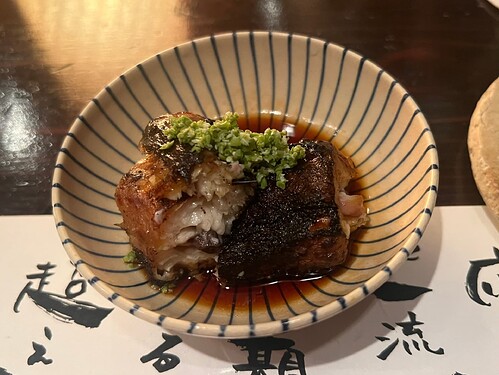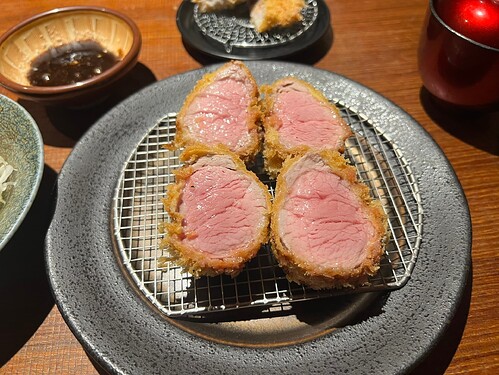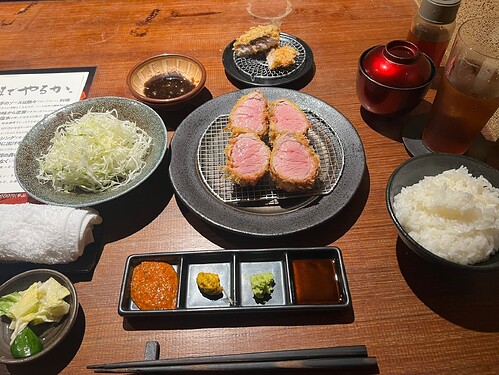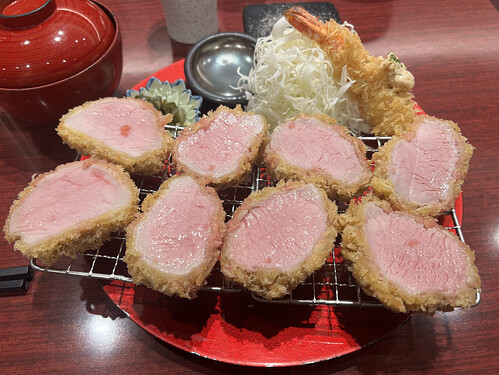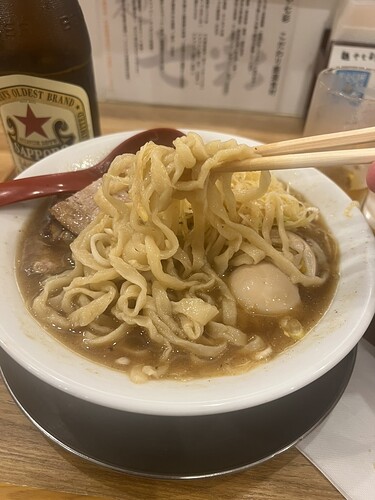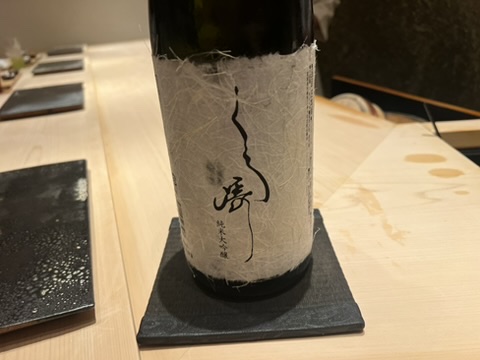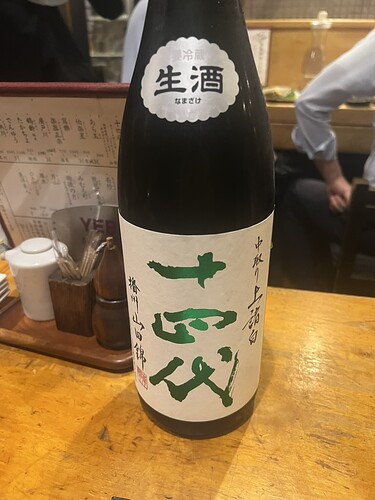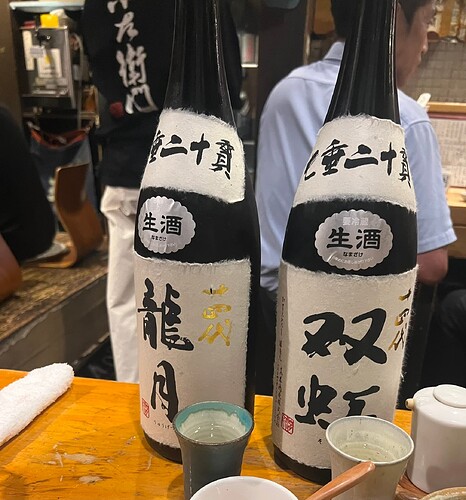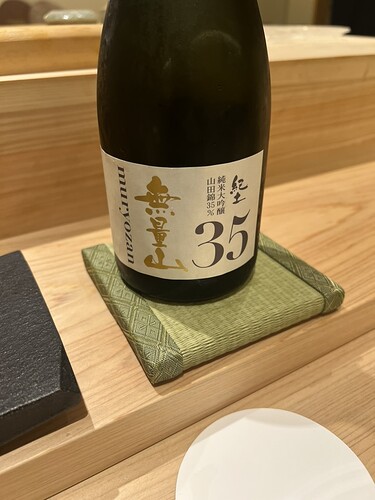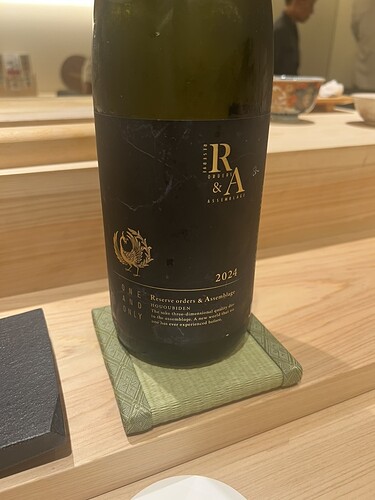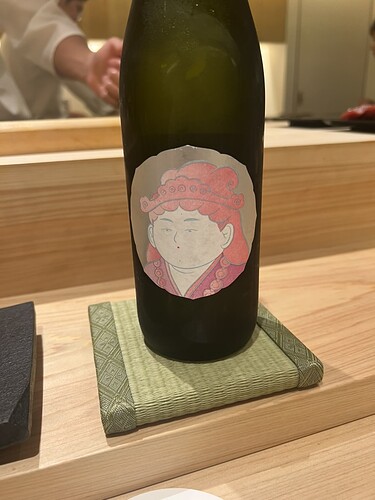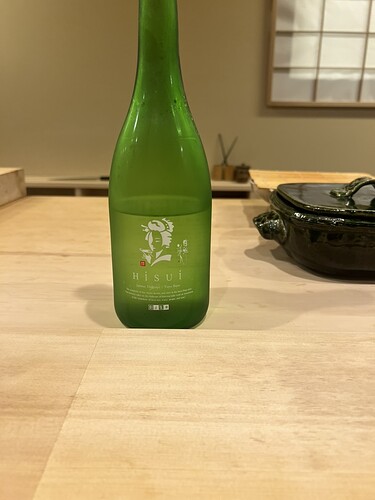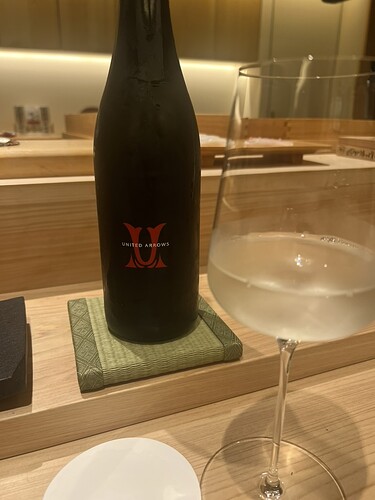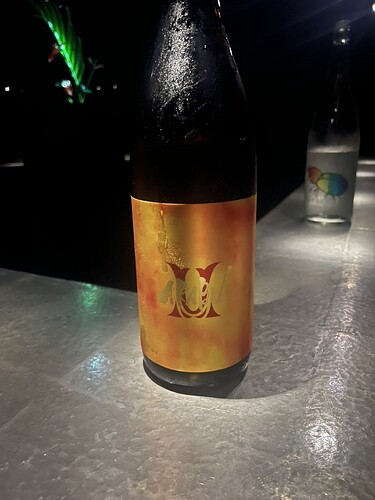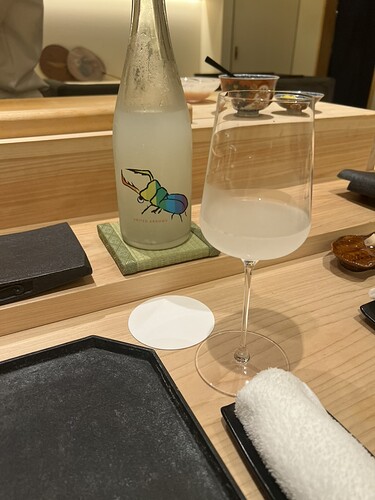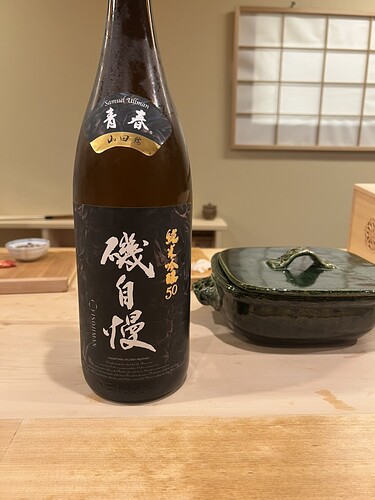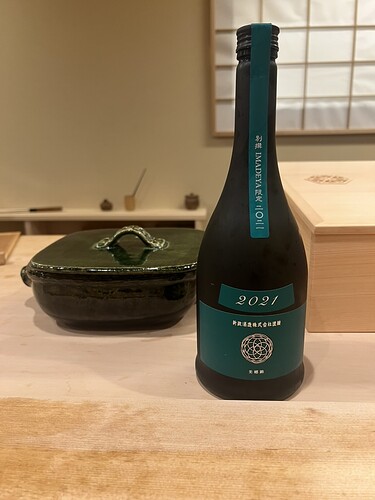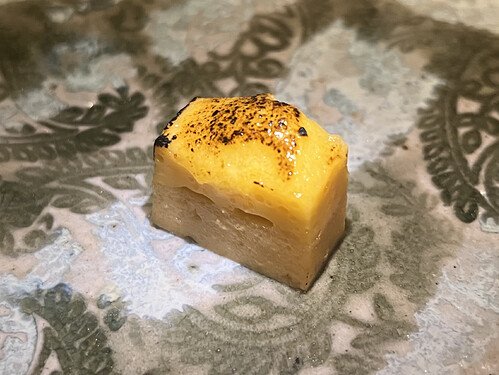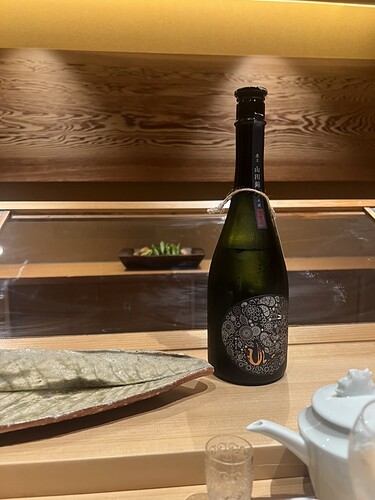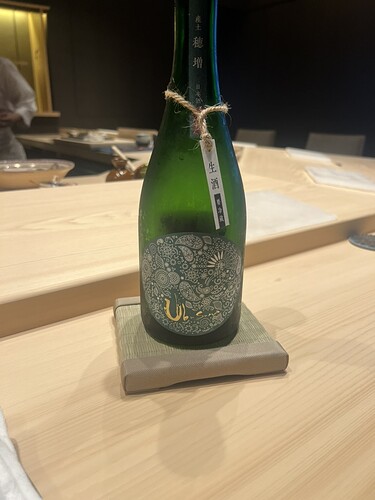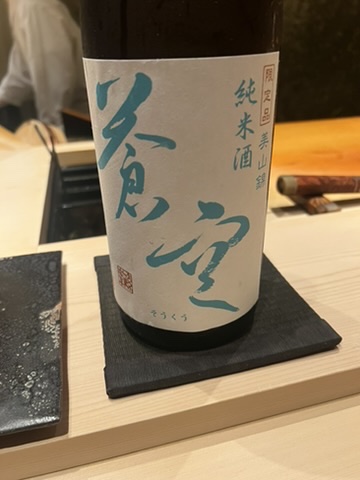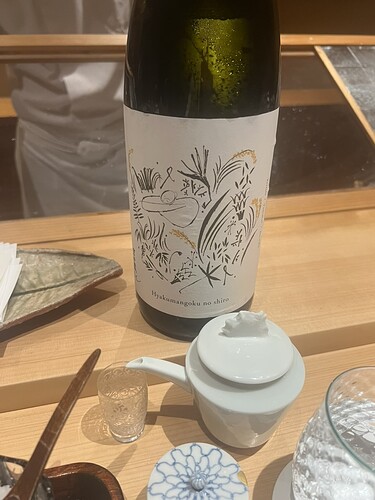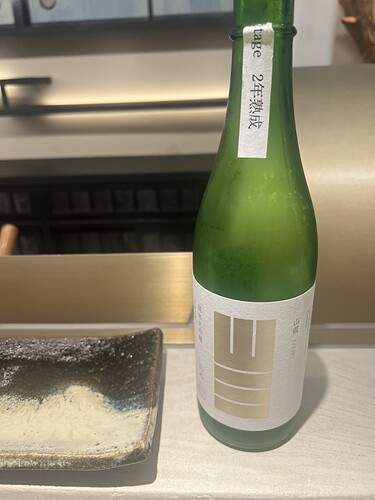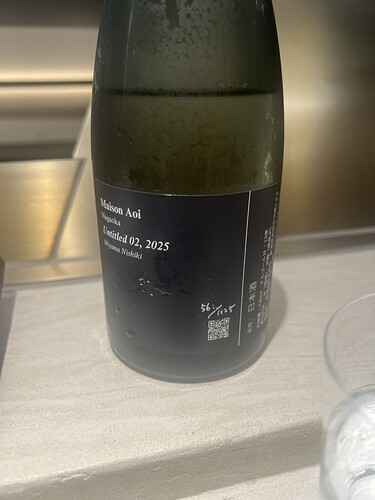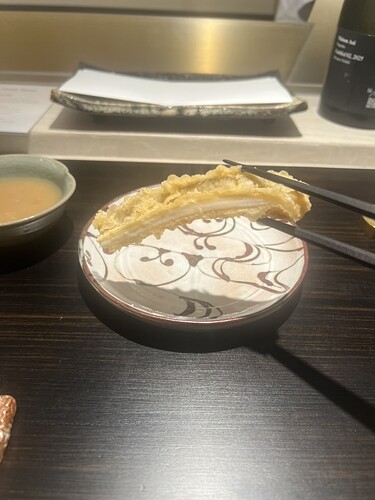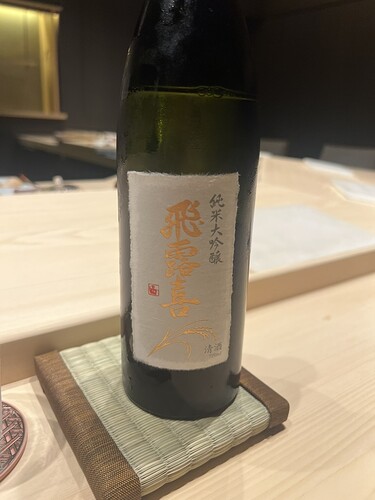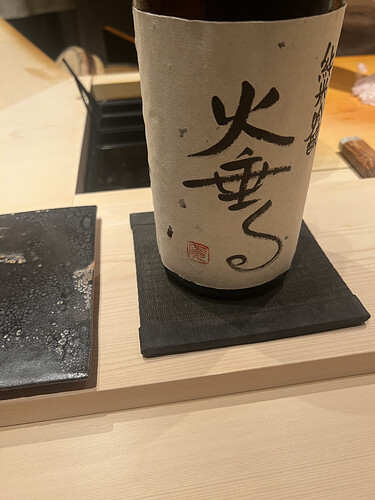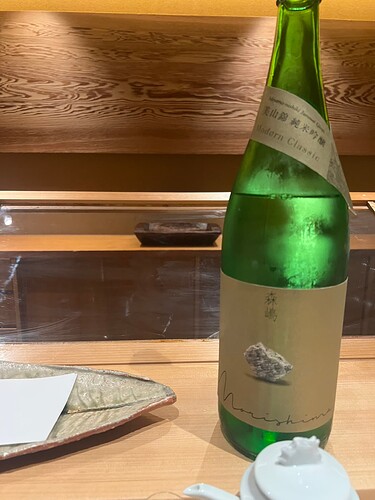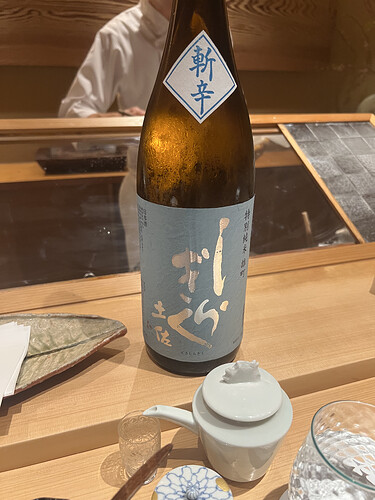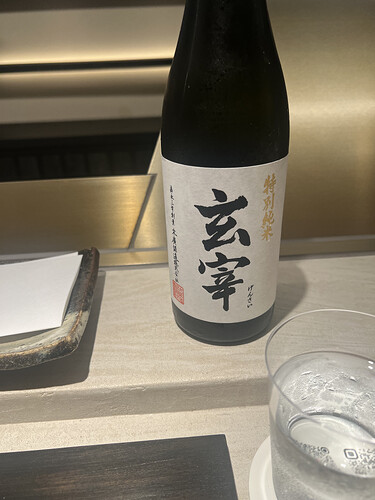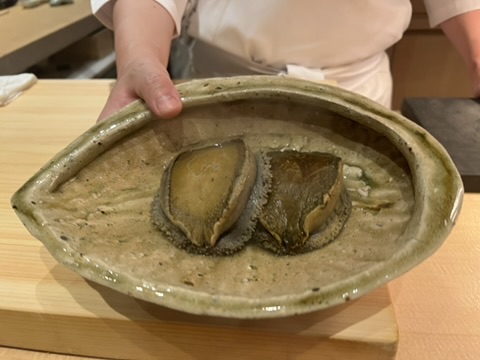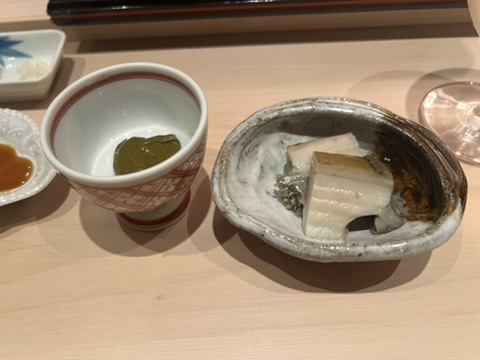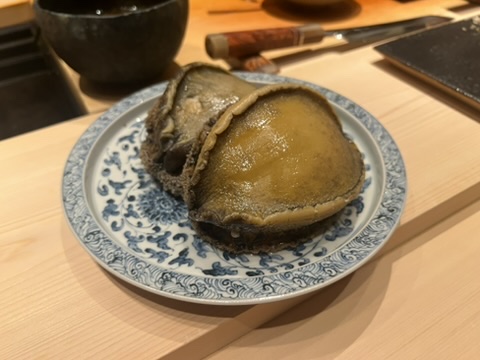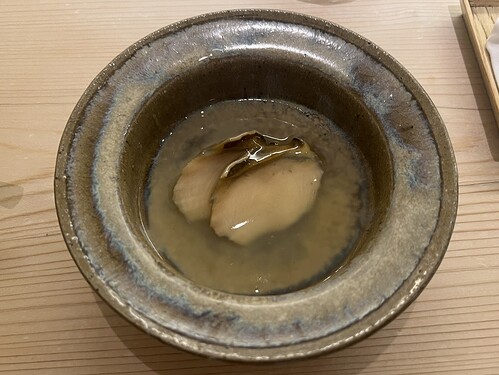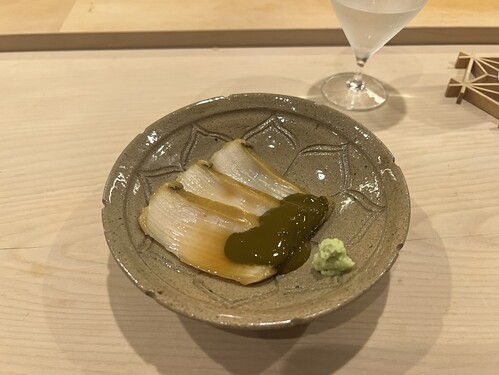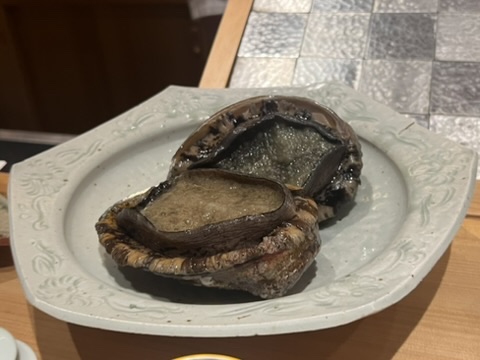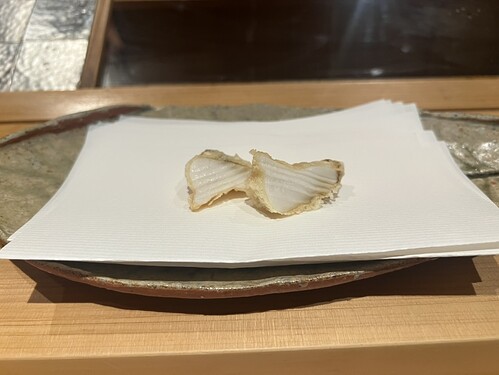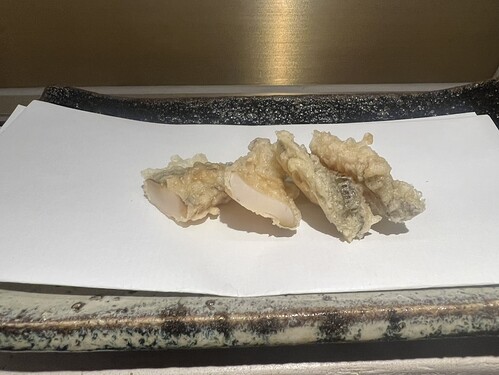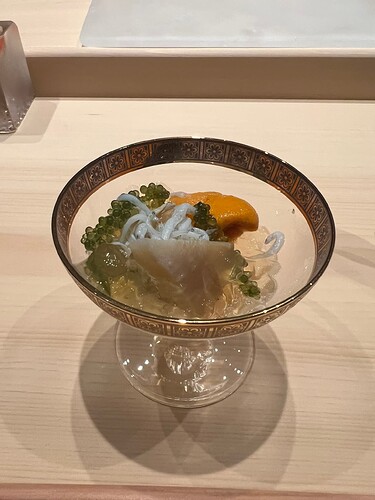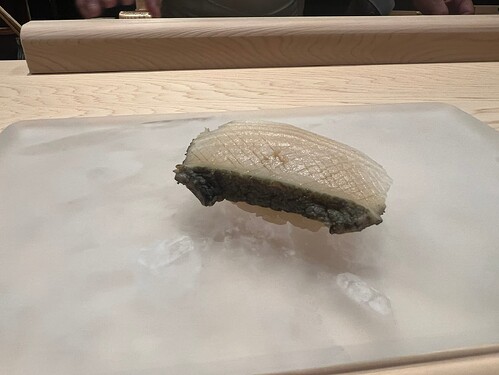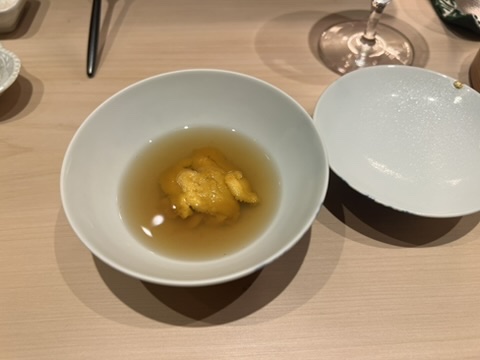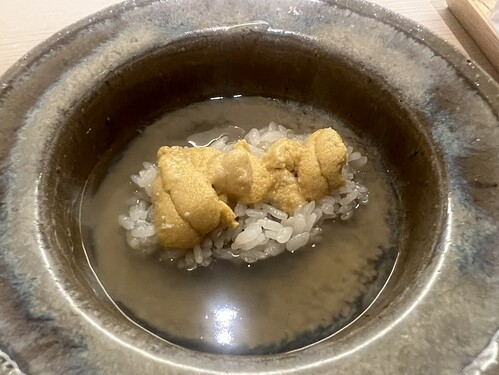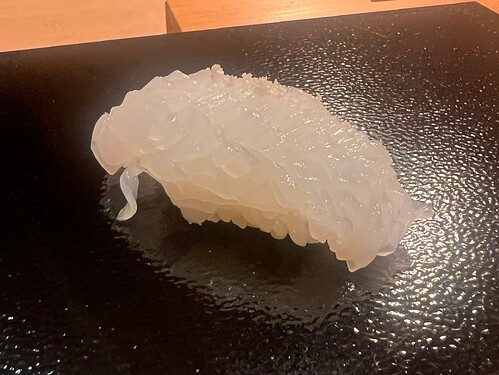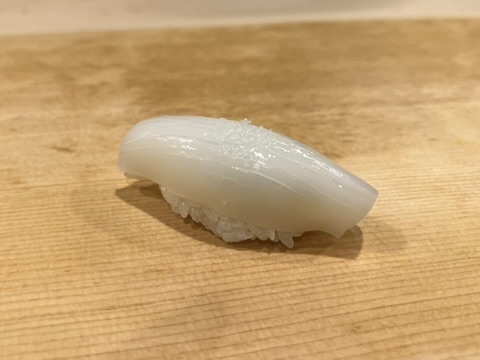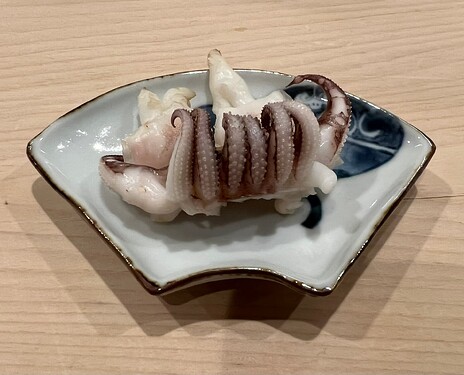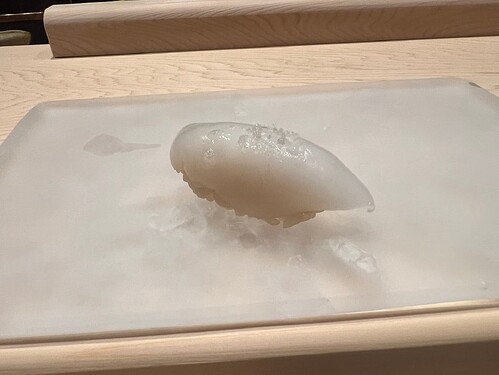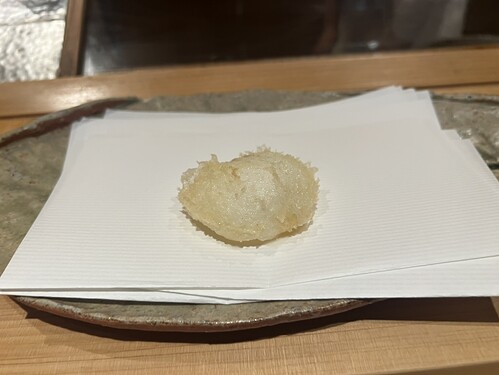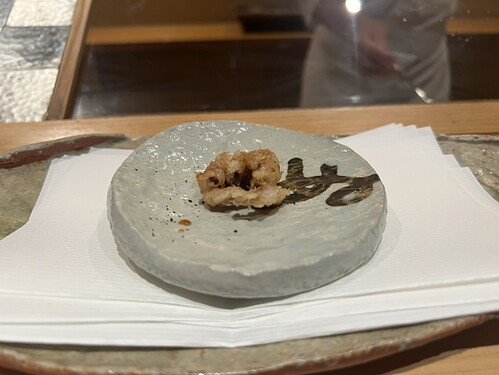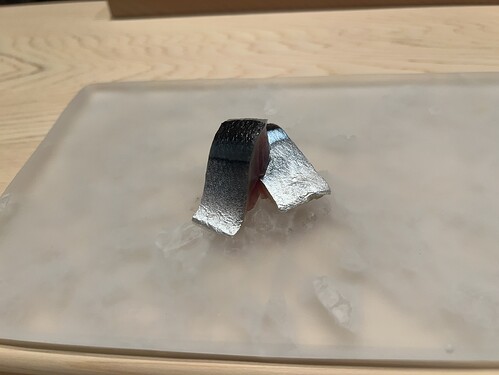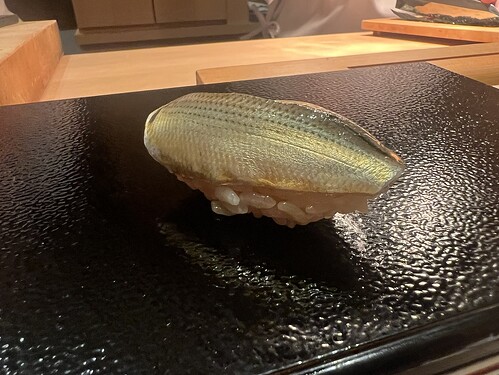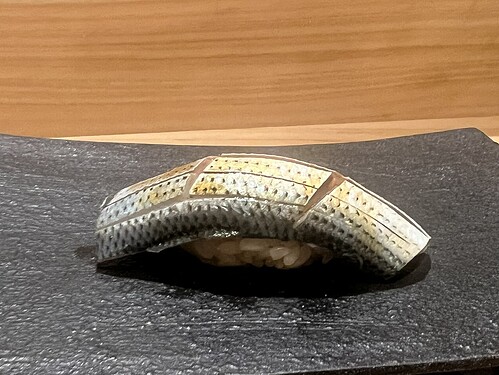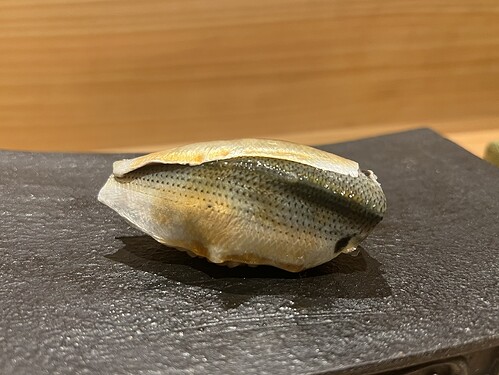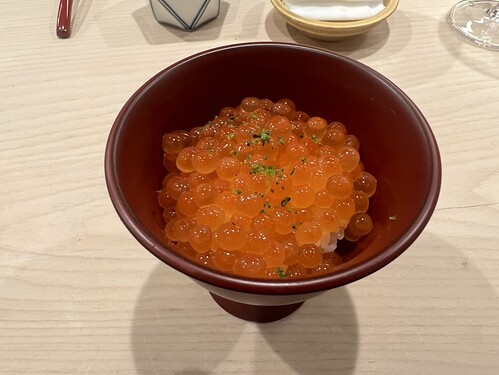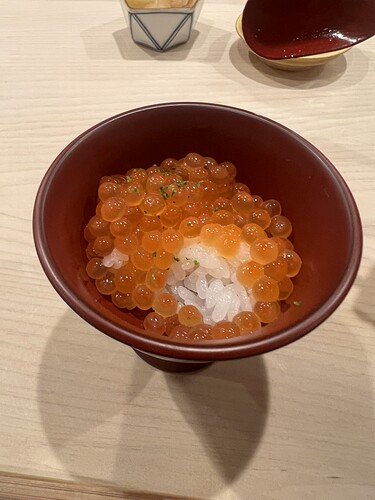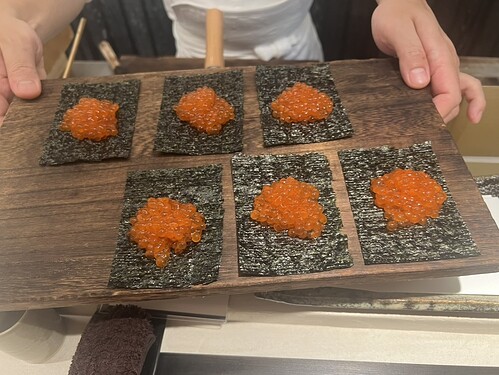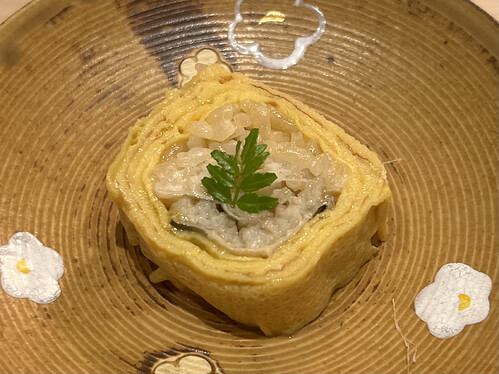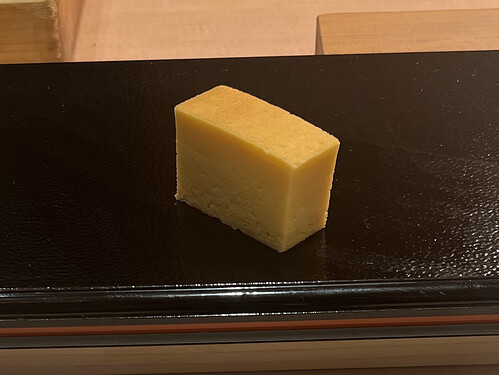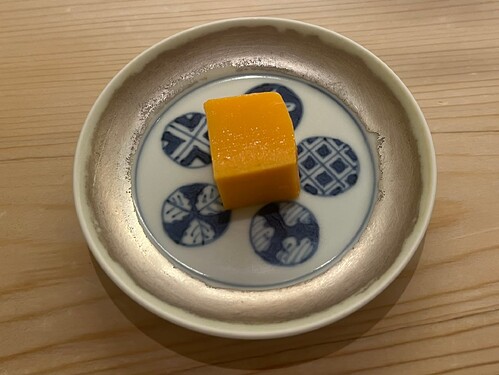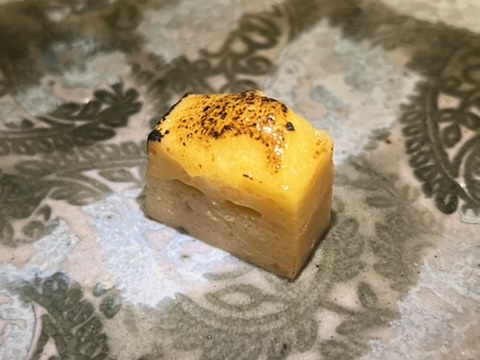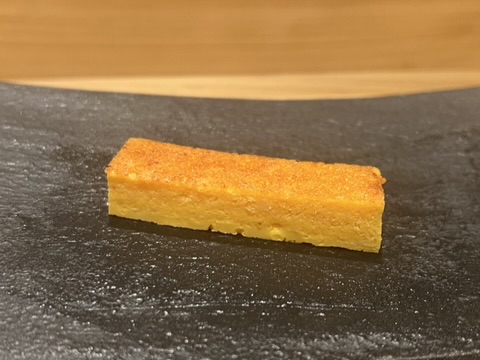Reporting back from 10 nights in Japan - mainly Tokyo, but I made a couple of day trips to Osaka and had a meal in Shizuoka as well.
It was really hot and humid, about 97F on most days, but it was still a good time thanks to some new experiences and predictable repeats. While summer is not known as a peak time for sushi, there are some seasonal ingredients that I really love: kuroawabi, akauni, shin ika, ikura, sanma, iwashi, and shinko (ending season).
I rendezvoused with some friends who were vacationing from Paris but ended up skipping the Osaka World Expo. 9 sushi, 2 tempura, 1 robata, 3 tonkatsu, 2 ramen, amongst a few izakaya meals. I’ll try to provide some details in the rundown but keep pictures to max 6 per place.
Sushi (in no order)
-
Kojimachi Nihee, 1st visit
The highly anticipated relocation of Sushi Inomata from Saitama to Tokyo. Straight to the point - very high quality nigiri (it’s nigiri only), no pictures allowed, and a beautiful buildout that’s spacious (there are only 6 seats), luxurious, and traditional feeling with chashitsu elements. Kojimachi is the area, Nihee is a family name.
20 sushi (I’m including tamago and an uni rice) and I added 4 bonuses. 2 sake to pair - Denshu and Hiroki. Near the beginning, some standout shiromi (makogarei and shibudai) with great chew and a couple servings of really top akauni (in season for 2 months only) - 1 from Amakusa and 1 from Ehime. I love Inomata-san’s magurozuke flight and the kohada was elegantly done as a palette reset after otorozuke. Excellent balance of natural flavor vs. marinated, and good natural grip formation with soft yielding texture. Loved the triple-layer iwashi. The nori shop sent Inomata-san’s wife 8 varieties to try and she picked a good one, I think - such great umami with the ikura I had to double up.
Shari is excellent - good definition with umami and an elegant punchiness that’s not too salty/sharp. I found it quite balanced and easy to eat more. Grains felt medium long in the mouth and had a good proportion to neta.
Okami-san’s service is engaging and friendly. Personally, I do like otsumami or some prepared dishes in a sushi meal, in part because they can give a great seasonal impression, especially delivering on texture or opening the palette. As far as pure nigiri goes, Inomata-san’s is some of the best to my taste.
(NO PICTURES)
-
Fuji Takumi (Sushi Sho Mt. Fuji at Gora Kadan), 1st visit
Brand new Sushi Sho at the new ryokan Gora Kadan Fuji in Shizuoka. The property is serene and spacious with direct views of Mt. Fuji - and you can even see it from the restaurant’s window. The sushiya just opened and the ryokan opened on July 20. It seems like a smaller buildout than the Waikiki or NY, but the whole property is beautiful and calm.
Like Sushi Sho NY, the meal here starts with a “shorter omakase” then moves to okonomi. There are some Shizuoka specialty dishes and new servings with local Shizuoka produce. (I’m guessing they may use Sasue Maeda, since that also supplies Sushi Yoshitake whose branch is at the Hakone Gora Kadan not far away). 22 servings in the shorter omakase (they’re mostly quite small) and I added 9 nigiri and 2 hosomaki before dessert. 7 sake to pair.
Sho style, 2 shari, alternating between small nigiri and otsumami with some creative riffs off regional dishes. Shari is generally a touch sour and warm but balanced salt in salt. In texture, the grains are medium-small with medium packing and a slightly soft impression. Servings were small and very moreish, good with sake. Delicious gari including pickled tomato
Looking back, actually quite a few good hits and it was a very nice time with nice hospitality, a serene setting, and unique tastes.
Kuroawabi (from Chiba), shirauo, abalone jelly, umibudo. Nicely textured start.
”Shizuoka owan” - sakura ebi shinjo, ultra delicate and moist exploding with flavor, with fried sakura ebi, sakura ebi dashi, and junsai. One of the surprise bites of the trip.
Fuji lake trout. “Aka-fuji” brand rainbow trout from Shizuoka, with sakekasu and - fermented rice mixed with karashi mustard into a paste called “igarashi” (a portmanteau of “(shar)i” and “karashi”) and pickled mazuma wasabi stems. The sake kasu on the trout is perhaps reminiscent of the snow cap on Mt. Fuji but it also resembles another famous dish
Ankimo Narazuke. The 5-year aged Shizuoka melons were less alcoholic and salty than other narazuke. Shorter fermentations a darker but they lighten up after year 3, anpparently. Ultra soft ankimo, great example.
Sunazuri Toro
Iwashi Namerou wrapped in pickled mazuma wasabi leaves.
-
Kurosaki 7th visit, back at the main counter. I continue to love this place for many reasons. There’s a beautiful flow to the meal - starting with shiromi in irizake (here it was makogarei), a nod to tradition, and then some of the best shellfish (the botanebi, the chawamushi, all the kai), an exceptional magurozuke flight with warmed sake, some prized seafood, and a standout kanpyo temaki.
7 otsumami, 13 nigiri and some bonuses. 4 sake to pair.
Shari is firm and small with excellent definition and good fragrance. Small circular grains feel modern in style with nigiri that’s longer and low, for a great marriage of fish to rice and mouthfeel.
Sanma yaki with kimojoyu - one of the bites of the year!
Chutorozuke - always good with warmed sake, here with Kurosaki’s own label by Niizawa.
Mirugai - maybe the best I’ve had
Hakata umi-unagi - both ultra crisp and fuwa fluffy
Kuroawabi - encored serving the liver sauce with shiroebi balled up to look like shari (pictured)!
Kanpyo temaki - ultra crisp nori, slick and crunchy kanpyo folded, for a refreshing impression. Kanpyo is well balanced in taste.
-
Sushi Namba Hibiya, 4th visit. Many, many great bites. I go back and forth on whether I prefer the otsumami or the nigiri. The nigiri are small and delicate but the attention to temperature and pristine neta make for really excellent textures - at times, like with kasugodai or yariika, it’s almost hard to tell the boundary of the neta. The impression is gentle - on that note, Namba-san uses tategaishi and the rice always feels airy not tight. There are also 2 rices. The grains are long and sticky, with good taste but generally not aggressive in vinegar (except but the warm akashari paired with jabara toro, which made a great impression).
Iwashimaki - one of the best, maybe the best up there with Sugita’s and Kurosaki’s.
Ankimo - top 2
Yariika - great texture that highlights the rice’s stickiness and airiness.
Shimaebi - so creamy with a little snap.
Aji - so good. All the hikarimono here are very well balanced.
Akami
-
Sawada, 3rd visit. 26 servings including a little bonus and some palette cleansers. Course consisted of maybe 20 nigiri itself. The chutoro and kai - mushiawabi, mirugai, and tairagai - were all very good. I respect Sawada a lot even though the rice isn’t really to my taste. Last time, I thought the cumulative salt really hit near the end, but this time, I noticed the rice being a touch too firm for me. Kohada itself was also very firm, maybe the most cured I’ve tried, and I think it’s an intentioanl stylistic direction. Sushi Sawada feels a bit like a high end old school shop that eschews modern trends (except for some fruit palette cleansers). Nigiri were a little long and low but with noticeably tight and hard rice at times, relatively speaking. Reservations are quite easy now but they’re only released the day in advance. It’s very strict still with no pictures or cell phone use at the counter. Sawada-san himself does joke around in the 2nd half of the meal to lighten the mood, and I will continue to visit in the future to understand the approach more. Even if the sushi is not my current preferred style, I do admire the whole work.
Cooked kensaki ika inrouzume with kanpyo and goma was a nice bite I haven’t had elsewhere. Katsuo warayaki with raw garlic and salt, in the style of Kochi prefecture tataki, was actually quite balanced (even better than the ginger soy option for katsuo I had last time).
(NO PICTURES)
-
Gaienmae Takemoto, 1st visit. An excellent new find for me. This shop relocated from Fukuoka last year to Gaienmae in Tokyo, though at the time of leaving it was over Tabelog 4 and rising as a bronze recipient. Chef Takemoto-san and his wife run this nice shop that is really underrated right now. He was previously did a residency at the exclusive Sushi Nigiri Tokyo 100 Club, and seeing that is how I found out about them. Don’t pay attention to the new Tabelog score now since there are so few reviews; I’d expect this in the 4.1+ range easily upon normalizing. More important than scores, though, the sushi is super enjoyable and the experience is well coordinated. Out of the 9 sushi meals I had this trip, this was one of my favorites and there were many, many great bites.
2 otsumami, 17 nigiri, a bonus torotaku maki, and then miso soup. 4 sake to pair, including their own called Hisui, a junmai daiginjo produced by Toyo Bijin, before moving onto Mimurosugi, Isojiman “Seishun,” and Aramasa Viridian by Imadeya.
Shari and packing are great - rice is well defined with a gentle firmness but not hard. Good marriage with neta, more umami and salty than sour, but balanced and not aggressive. In the first few minutes of guests arriving, they do shari kiri at the bar and the fragrance was so good with the unagi grilling over charcoal nearby. Nigiri are compact but tall, not too tight, medium to medium small, and well composed.
I was surprised how good the nigiri was off the bat from pillowy and thicker kasugodai to some of the very best shinko this year. But the nihamaguri blew me away - the slight medium rare center took it to the next level.
chef and his wife okami-san are very nice and pleasant
Chiba abalone
Uzaku - super crispy and fluffy. Great with the nicely pickled cucumbers.
Double toro
Kuruamebi
Nihamaguri - incredible with the medium rare center. Next level hamaguri and nicely trimmed, well proportioned with great texture.
Anago 1 of 2 ways. Here shirayaki with yuzu, fragrant and cloudlike.
-
Sushi Akira, 1st visit. Very enjoyable and promising dinner here with a couple of fantastic bites, and I’ve heard that chef Maeiwa san has been really improving since opening in 2019. Chef Maeiwa san worked at Sushi Sho Saito but also Kozasa and high-end Chinese restaurant Sazenka. It’s NOT Standing Sushi Akira, with which some have confused it. I can see the appeal here, from the creativity to execution and service, and it checks pretty much all the boxes (though I didn’t realize it’s already at 4.40 Tabelog!). The space is not bad but I think a nicer counter and presentation might help it overall, too.
8 otsumami, 15 nigiri including a couple of add-ons and 4 sake to pair.
2 shari - slightly warm with pretty good definition and nice packing. I preferred the white shari especially with whitefish. Little if anything to fault, quite well calibrated.
chef is very nice and service was good with a sommelier and team
Anago bozushi umaki wrapped in a thin dashimaki tamago and topped with kinome. Highlight. Love the creativity on this and it requires a bit of work and skill
Hamaguri dashi - incredible. One of the best I’ve had
Oni-aji (new to me) double layered was my favorite nigiri. Great texture!
Aka uni maki - short season (2 month), excellent product.
Aji - really good
Kohada - very good
- Sushi Kondo, 1st visit. Relaxed but sophisticated sushiya that opened in 2024 in Azabu Juban from a young chef with both kaiseki and sushi background. At 27,500 jpy, the meal is a good value and option in the mid-priced range, particularly if you like a kaiseki-sushi hybrid. I like to try spots from young talent and I had a very enjoyable meal that I think (over)delivers for the price tier. Most of my other sushi meals cost 1.5-2x +, so a direct comparison isn’t really fair, but I had a really enjoyable time here and there were some really nice bites - the starting dishes were strong in particular.
It’s a comfortable and spacious spot with some nice plateware from Japanese pottery to vintage Baccarat. Sake, which is served in wine glasses, were seasonal releases by good modern breweries - Senkin x UA, Hououbiden Reserve Assemblage, Shiraito x Toyo Bijin project for Shiraito’s anniversary, Akabu x UA, Muryozan, etc.
6 appetizer plates, including a hassun platter. 15 nigiri including 3 add ons then kanpyo hosomaki. The interior and service are very nice, and the taisho is very friendly. If you want a nice, creative, and diverse sushi meal in a sophisticated setting in the 27,500 jpy range, Sushi Kondo is a very good option.
Shari is well seasoned, moderately salty and clean sour in a good way. Grains are smallish and packed consistently medium tightly, and the nigiri size is medium to medium plus with good chew and plush, pillowy neta vs slightly tighter and larger rice serving. It holds well in the hand. The nigiri is maybe a touch large for my tastes but I’m nitpicking. Gari is excellent, and I especially liked the pickled celery.
Matsukawa karei from Hokkaido - excellent toothsome crunch, perfect. On vintage Baccarat.
Ainame, coated in kudzu powder - excellent ankake sauce with bits of myoga and shiso buds. Cut not fully through, so it can flower out and keeps some slippery fattiness near the end - really nice with the sauce and sweet, silky, and slippery Kid Muryozan 35 JD.
Hokkaido botanebi marinated in xiaoxing wine, sansho, and sudachi. Quite balanced and not overpowering like xiaoxing wine can be. You get a really creamy snappy texture with good sweetness and juciness - definitely suck the heads and take a sip of Muryozan for a luxurious combo. With a beautiful plate to match.
Hassun - hamo nanbanzuke (well calibrated sweet and sour), mozuku, tako, ginnan, and grilled karasumi. Hououbiden’s Reserve & Assemblage x Imadeya drank very well here.
Sanma with liver soy. Excellent plush sanma with good fatty balance - the rice’s quick sourness worked well.
Anago - excellent creamy bite with a delicious runny nitsume.
- Sushi Fukuzuka, 1st visit. Chef here is a sushi geek and this is one of those places like Namba Hibiya that lists the temperature of both shari and neta for each serving. Style is a bit different here - it’s dim, there’s bright lamps at each seat to highlight the serving, there are 3 types of gari, 3 types of wasabi, 3 gaeshi movements displayed (but mainly hontegaishi with some showy flair), soup is soba in maguro dashi, dessert is ice cream is made with liquid nitrogen at the bar, etc. You choose your chopsticks to start (each made of different wood) and there’s a lot of wood around in general but some might find the dim setting unique, some might find it a little bit cold. Overall the chef is talented and definitely doing things a bit differently indeed.
Shari was nicely packed with a soft impression. Medium plus sour, particularly when warm, good with tuna. Nigiri is on the smaller side, but the tuna formations had a nice drape.
Temperature control was good - noticable with the 5x tuna flight. Chef even calls for new shari not just for each piece but also a specific serving at the bar (because the guest at the end would get rice cooler than that served to the first guest).
About 18 servings - 5 of which were starters. I didn’t love the opening shirasu and suzuki sashimi was fine, but the ultra creamy and cold botanebi sashimi was incredible. Grilled tachiuo on quite sour and warm rice was pretty good, then tuna sashimi with mustard and nori wasn’t really my taste.
But then nigiri started with a serious 5x tuna sequence - chutoro senaka, akami, chutoro hara, otoro, and seared skin meiji maguro. The tuna nigiri were actually really good. Double serving of uni (rare akauni from awaji island and hadate high box from hakodate) gunkan was a real delight, too. They’re definitely doing things presented in a unique way, but there were some great tastes at times, particularly the tuna. Ingredient quality can be very high - Yamayuki tuna, very good uni, etc.
Reservations are incredibly easy and surprisingly you can reserve on OpenTable. This is out in Kagurazaka. For the fair price, there are some
Incredible botanebi from Hokkaido, for sashimi
Chutoro senaka cut - really good
Akami
Managatsuo - very nicely formed
Uni combo for gunkanmaki. Elusive akauni and Hadate murasaki uni.
Ice Cream for monaka
Tempura
-
Numata (Osaka), 2nd visit. Worth the journey took the shinkansen to and from Tokyo just for this lunch. It’s one of my very favorite tempura restaurants and I was super glad to return to this innovative and technically great place. Not surprised to learn it’s now #1 tempura in Kansai on Tabelog and rated #3 overall. I don’t just go by numbers but this place is a destination for me, indeed. My first visit was earlier this year and blew me away so I had to return.
2 very good starters and then onto about 18 servings of tempura, then rice, pickles, soup, and a choice of a final rice (5 choices!). First, excellent somen with a Hokkaido fruits tomato surinagashi, with caviar. Super umami and nice chilled slick effect. Then a super crunchy uzaku with great umi-unagi and pickled celery. High level starters
Then tempura - starting with heads fried without batter, then kurumaebi 2 ways (2nd one is medium rare). Super impressed by the combination of 2 types of corn fried as one and the kuruma ebi-stuffed giant shiitake. Okura and shishito also very admirably cooked in terms of texture and juciness without being over. Seafood like shinika, kuroawabi, kisu, shiroamadai, and tachiuo were all great. The rice pot was way better than it needs to be - rice quality was super high, at kaiseki level. Ended with a watermelon granita later served with a bit of Monkey 47 gin mixed with mint.
The batter is light and very lacy, evenly coating the ingredient to amplify its natural qualities.
Pretty much all tempura here are served with just as is or a very powdery pink salt. The excellent daikon tsuri is just a palette cleanser on the side unless they top the piece for you.
Kurumaebi-stuffed shiitake. This was 1/4 of the shiitake. One of the bites of the trip - to have both of these cooked but juicy and bouncy medium requires a lot of skill
Double corn - yellow corn from Hokkaido and white corn from Aomori, sandwiched and medium rare with excellent umami, sweetness, and snappiness. Great with Hyakumangoku no Shiro sake, from the makers of Tedorigawa (Yoshida). Excellent transparent sweetness not from the sake so much as amplifying the natural sweetness of the corn (also great with anago and yuzu at Sushi Shunji)
Nagaimo “somen” with hanashiso - ultra refreshing texture, both slippery and finely crunchy.
Shishito - this was surprisingly good. Even fry not too dark, not spicy, still juicy and just a little crunch.
Yukimuro potato - aged 18 months. This ending piece is a done longer and a little darker as it has a lot of sugars so they want a crumbly / melty interior and a caramel-like taste. Last time it was carrot. This potato is long aged in a very humid but freezing temp snow-packed house to concentrate its sugars. Incredible!
Tenbara-don - excellent.
-
Kusunoki Nakameguro, 2nd visit to Kusunoki (1st to Nakameguro). New Nakameguro buildout now has 12 seats at the counters with two friers simultaneously (you pay according to the frier). Now the taisho Kusunoki-san is also going to be frying here while the Yotsuya honten is closed temporarily.
Kusunoki style uses an “oil cutting” technique that reduces oil on the surface, so the chefs deliver the tempura directly to your plate by hand to prove there’s no oil residual (or their fingers would be burnt). Amazingly, your paper serving retains no oil at the end of the meal, like no visible oil at all.
The ingredients are really high end. I had Ichihara-san, though Hashimoto-san also did a comparison for the opening kurumaebi. Frying technique is really quite special and the ingredients are amplified. The impression is light and the salt and moisture control was very good, the uniform batter very admirable. I really enjoyed thicker items like renkon, which were really nicely cooked. Compared to Numata, the style is different, a little less lacy here. Rice pot at the end was with curry after a kuruma ebi temaki, a little bit strange.
The new buildout is less intimate than the Yotsuya counter and it’s brighter. They’re new and I think off to a good start but I prefer the experience at the Yotsuya honten.
3 starters then about 18 servings of tempura and a few dishes before dessert and add-ons. I added giant oyster, karasumi, megochi, and kisu.
Ingredients - anago, kinmedai, hirame
Ingredients for extra orders: karasumi (very high quality), giant oyster, kisu, megochi (an old school edomae staple fish called “bigeye flathead”)
Kisu
Anago nikogori - delicious with fluffy anago and melting, smoky grilled eggplant (cold)
Karasumi. Still creamy, but with some pop of the cured eggs. Excellent, especially as a drinking snack. Kusunoki sells their karasumi to go - about $160 for 5 oz.
Murasaki uni stuffed in shiso
